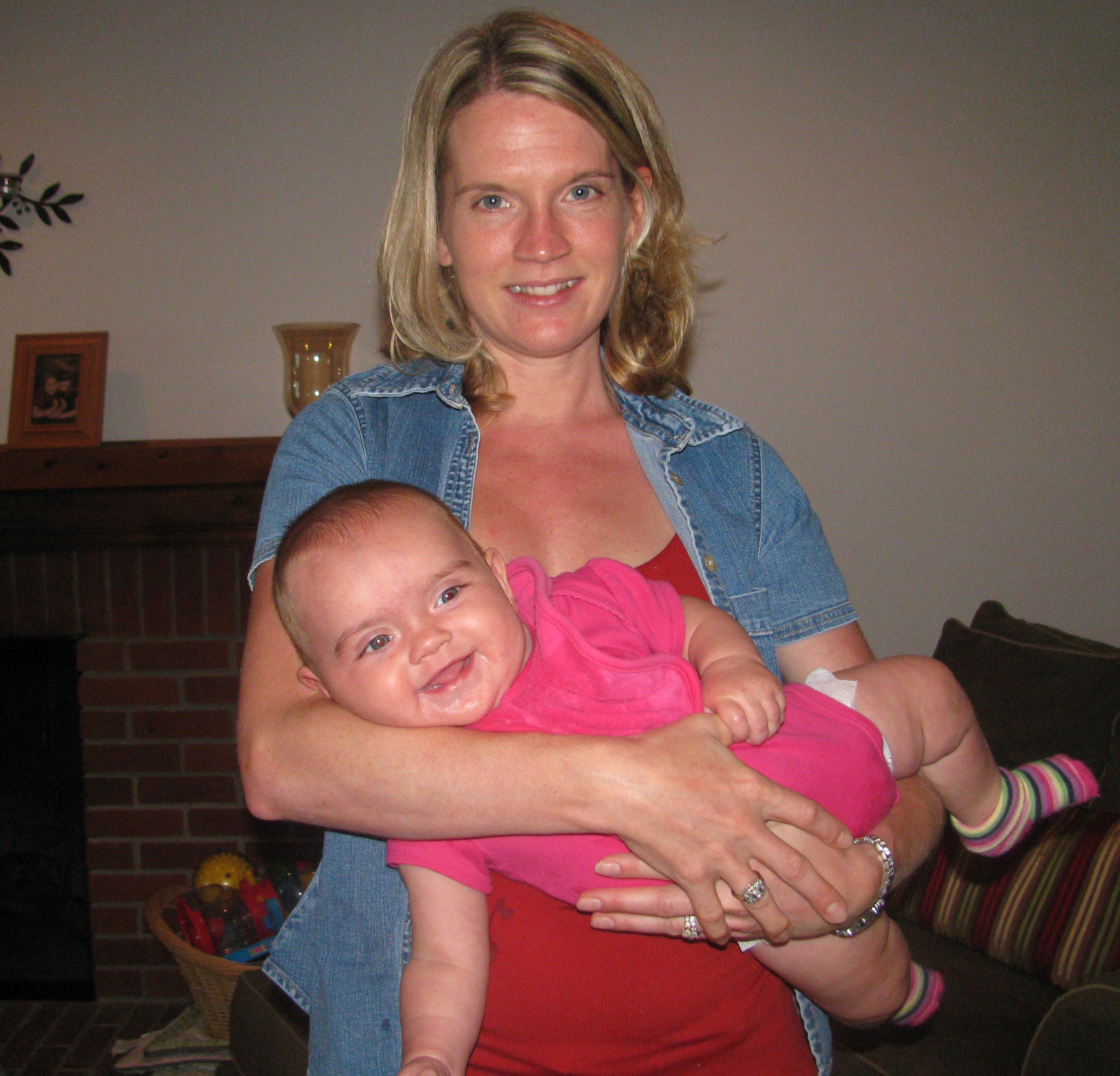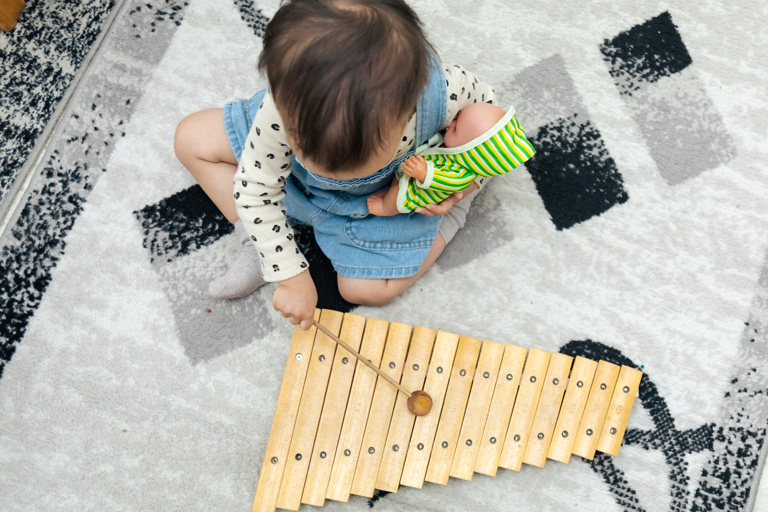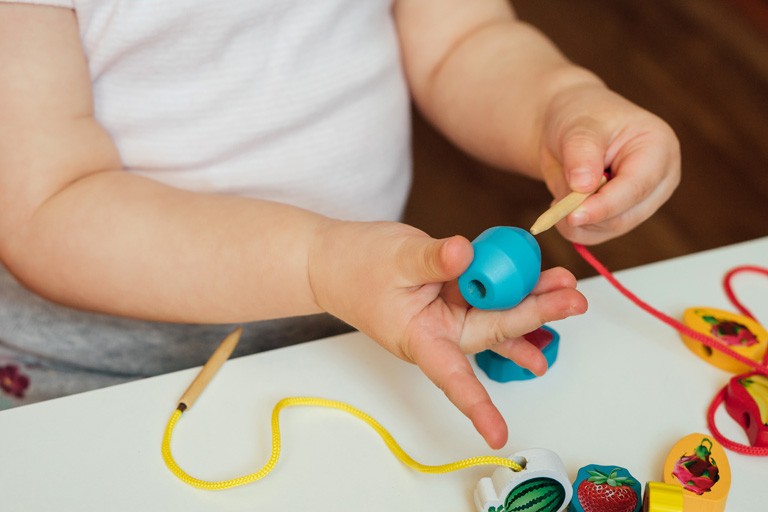
Parenting Strategies to Encourage Kids’ Scholastic Success
October 29, 2018
Holiday “Dieting”: Sensory Edition
November 28, 2018As a parent, the word “symmetry” probably doesn’t come to mind when you think of your new baby. As therapists, symmetry is something we look for in infants to ensure they are developing on target.
Just what is symmetry? And why is it important?
Symmetry, without going into too much detail, means that your baby is using both sides of his or her body equally and is not showing a preference for using one side over the other. Babies should be kicking legs equally and be reaching out with both arms/hands equally. Babies should also be turning their heads equally to each side in all positions.
If you notice that your baby shows a preference for keeping his head turned or tilted to only one side or if you notice that your child reaches with only one arm/hand or kicks with one leg only these can be red flags for development. Babies should not appear “right handed” or “left handed” in infancy. If you notice any of these red flags in your child please speak to your pediatrician or schedule an early intervention developmental evaluation.
If your baby turns his head to only one side repeatedly, his neck muscles may be tight and he may have something called Torticollis. This often leads to a flat head on the preferred side, or Plagiocephaly. Therefore it is important that you position your baby in such a way to promote a nice round head shape. Also, babies that prefer to turn their heads to only one side may only reach with the arm/hand on their preferred side, and they may have difficulty visually tracking or following toys to each side equally.
Babies heads when they are younger can change shape easily until their skulls begin to harden around the age of one year. If your baby doesn’t have a round head shape, this is purely cosmetic, but if his neck muscles are also tight this can cause difficulty with later motor skills such a rolling, and affect sitting, crawling and walking. Also, left unaddressed the longer a child keeps his head to turned toward one side can also cause asymmetries in the face by pushing his cheek, ear or even his jaw forward or out of alignment.
How can I promote symmetry and help prevent my baby from developing a flat spot on her head (aka positional plagiocephaly)?
- Tummy Time: When your baby is awake and supervised, tummy time is his MOST IMPORTANT play position! Tummy time strengthens your baby’s neck, back and trunk muscles needed for learning to lift against gravity and helps them learn to shift weight needed for rolling. It also relieves the pressure on the back of your baby’s head.
- Aggressive Repositioning: Since it is important that your baby sleep on her back and babies sleep A LOT, it is equally important that your baby does not spend too much time on her back or in any one single position or piece of equipment during awake hours. Change your baby’s position OFTEN! Rotate through tummy time, sidelying on her left & right sides & supported sitting. Rotate her through baby equipment such as swings, infant seats, bouncers, jumpers on an average of every 20 minutes.
- Holding/Carrying Positions: You know your baby best and he may have a preferred carry position. However, there are many more less traditional ways to carry your baby that can actually promote motor development. You also probably have a preferred “comfortable side” that you tend to carry your baby on, but as much as possible try to alternate carrying your baby on your left and right sides as well. You can carry him on your hip, facing forward, at your shoulder, sideways in a “football hold” or even tummy down in an “airplane hold”.
- Feeding: If you are breast feeding your baby you have the advantage that your baby already has to switch sides during feeding. If you are bottle feeding you should try alternating the side you feed your baby on. While this may be awkward for your to cradle him in the opposite arm, it is good for your baby to be able to turn his head to each side during feeding. You can also place your baby between your raised legs/knees and feed him straight on so that his head remains in the center (midline position).
- Diapering: You diaper your baby OFTEN, so this is a great time to remember to switch sides of the changing table that your baby’s head is placed at, so that each diaper change he has the chance to turn his head to a different side. Instead of picking your baby directly up after a diaper change, instead you can roll your baby to the left and pick him up and then next diaper change roll him to the right and pick him up. Again, this gives him practice turning equally to both sides.
- Sleep: Your baby must sleep on his back. However, you can alternate which end you place your baby’s head at each night when he goes to sleep. If your baby already shows a preference to turn to one side, say the right, then make sure he is placed so that he has to turn to the left to look out of his crib and see all the action.
- Playtime: Be sure to place toys and objects of interest not just right in front of your baby, or directly above of your baby if she is on her back, but place items to the left and right sides and in arcs and different patterns so that your baby has to look left, right, up and down to visually explore her environment.
Again, if you notice your child showing a preference for one side of his body over the other, or if your baby is between 3-5 months of age or older and continues to turn his head to only one side and/or has a flat spot on his head that is not resolving or is getting worse please address this concern with your pediatrician and/or call for an early intervention evaluation.






 Send to a friend!
Send to a friend!


